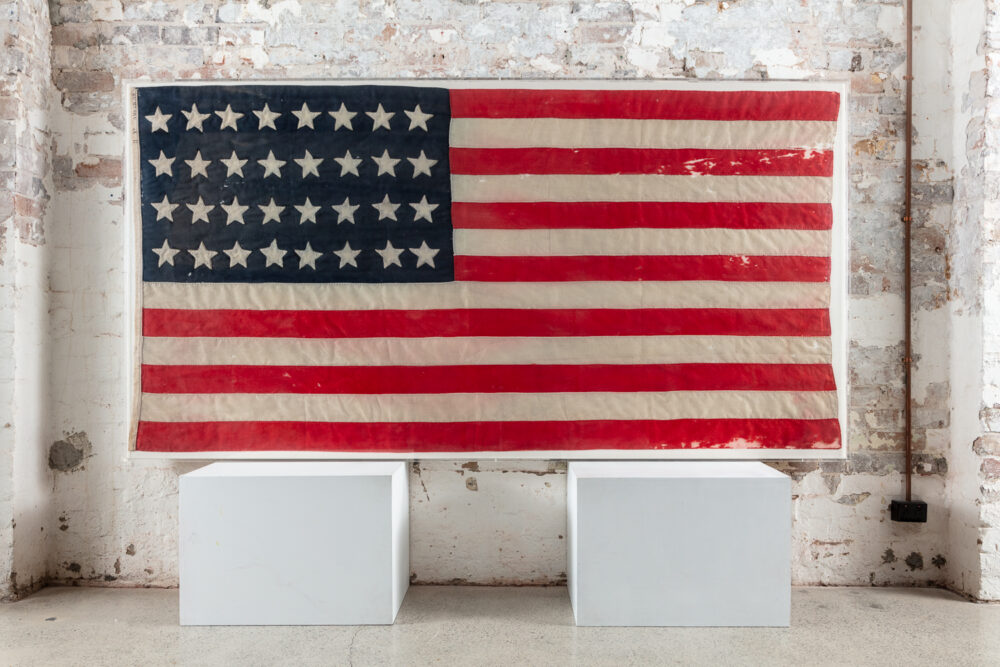


Darling River, New South Wales
carved and engraved hardwood, the entire surface replete with fine possum teeth adzed markings. Reverse with square cut lug handle, inscribed with collection numbers H509 and 130, old dark shiny patina.
approx. Long 70.5 x wide 7cm.
$4,000
Provenance
Robert Croll, Melbourne, Victoria, inscribed with collector number 130
Dr Gerald Holt Collection, dispersed by Christie’s Manson & Wood (Australia) in 1972 & 1974 inscribed with collector number H509.
Private collection, South Australia.
Private Collection Sydney
Associated Literature
Robert Henderson Croll: “Wide horizons: wanderings in Central Australia, Angus & Robertson, manuscript, 1937, The Royal Historical Society of Victoria Library
The collecting of Aboriginal artifact reaches back to colonial, first contact times. Local Indigenous communities around Sydney traded artifacts with visiting ships. There are many early colonial watercolours and engravings of waterborne trade between Indigenous Australians and the early English ships. Early shields, clubs and boomerangs were particularly cherished. Artifacts that were collected by notable pioneers, explorers or anthropologists remain of high interest to collectors. This Parrying Shield was owned by two significant 20th century collectors of artifacts.
In the early 20th century, Robert Croll was prominent in art circles. He was author in 1935 of an important biography of Tom Roberts, edited Streeton’s letters to Roberts (1946), and in 1920 produced an edition of etchings by John Shirlow. He also organized the Victorian State Centenary Art Exhibition, was general secretary of the Australian Academy of Art and a councillor of the Victorian Artists’ Society. In 1929, with the psychologist S. D. Porteus, Croll made the first of his six trips to Central Australia.
From Robert Croll, this Parrying Shield was acquired by Dr Gerald Holt, one of the finest and deepest collectors of Australian books, maps, and artifacts in the mid twentieth century. Christie’s Mansion & Wood were in the early 1970s intrusted with the auction dispersal of his most important collection.
Warriors in the South-Eastern Australia created two distinct varieties of fighting shields, each designed for a specific purpose. The first type, such as this one, were compact Parrying Shields, used to ward off blows from Fighting Clubs and other handheld weapons during hand-to-hand combat. The second style of larger shields were used to protect the bearer from projectile weapons, such as spears, throwing clubs, and boomerangs, thrown by an enemy at a distance.
A late 19th century Parrying Shield, late 19th century
$4,000
Out of stock
Darling River, New South Wales
carved and engraved hardwood, the entire surface replete with fine possum teeth adzed markings. Reverse with square cut lug handle, inscribed with collection numbers H509 and 130, old dark shiny patina.
approx. Long 70.5 x wide 7cm.
$4,000
Provenance
Robert Croll, Melbourne, Victoria, inscribed with collector number 130
Dr Gerald Holt Collection, dispersed by Christie’s Manson & Wood (Australia) in 1972 & 1974 inscribed with collector number H509.
Private collection, South Australia.
Private Collection Sydney
Associated Literature
Robert Henderson Croll: “Wide horizons: wanderings in Central Australia, Angus & Robertson, manuscript, 1937, The Royal Historical Society of Victoria Library
The collecting of Aboriginal artifact reaches back to colonial, first contact times. Local Indigenous communities around Sydney traded artifacts with visiting ships. There are many early colonial watercolours and engravings of waterborne trade between Indigenous Australians and the early English ships. Early shields, clubs and boomerangs were particularly cherished. Artifacts that were collected by notable pioneers, explorers or anthropologists remain of high interest to collectors. This Parrying Shield was owned by two significant 20th century collectors of artifacts.
In the early 20th century, Robert Croll was prominent in art circles. He was author in 1935 of an important biography of Tom Roberts, edited Streeton’s letters to Roberts (1946), and in 1920 produced an edition of etchings by John Shirlow. He also organized the Victorian State Centenary Art Exhibition, was general secretary of the Australian Academy of Art and a councillor of the Victorian Artists’ Society. In 1929, with the psychologist S. D. Porteus, Croll made the first of his six trips to Central Australia.
From Robert Croll, this Parrying Shield was acquired by Dr Gerald Holt, one of the finest and deepest collectors of Australian books, maps, and artifacts in the mid twentieth century. Christie’s Mansion & Wood were in the early 1970s intrusted with the auction dispersal of his most important collection.
Warriors in the South-Eastern Australia created two distinct varieties of fighting shields, each designed for a specific purpose. The first type, such as this one, were compact Parrying Shields, used to ward off blows from Fighting Clubs and other handheld weapons during hand-to-hand combat. The second style of larger shields were used to protect the bearer from projectile weapons, such as spears, throwing clubs, and boomerangs, thrown by an enemy at a distance.











